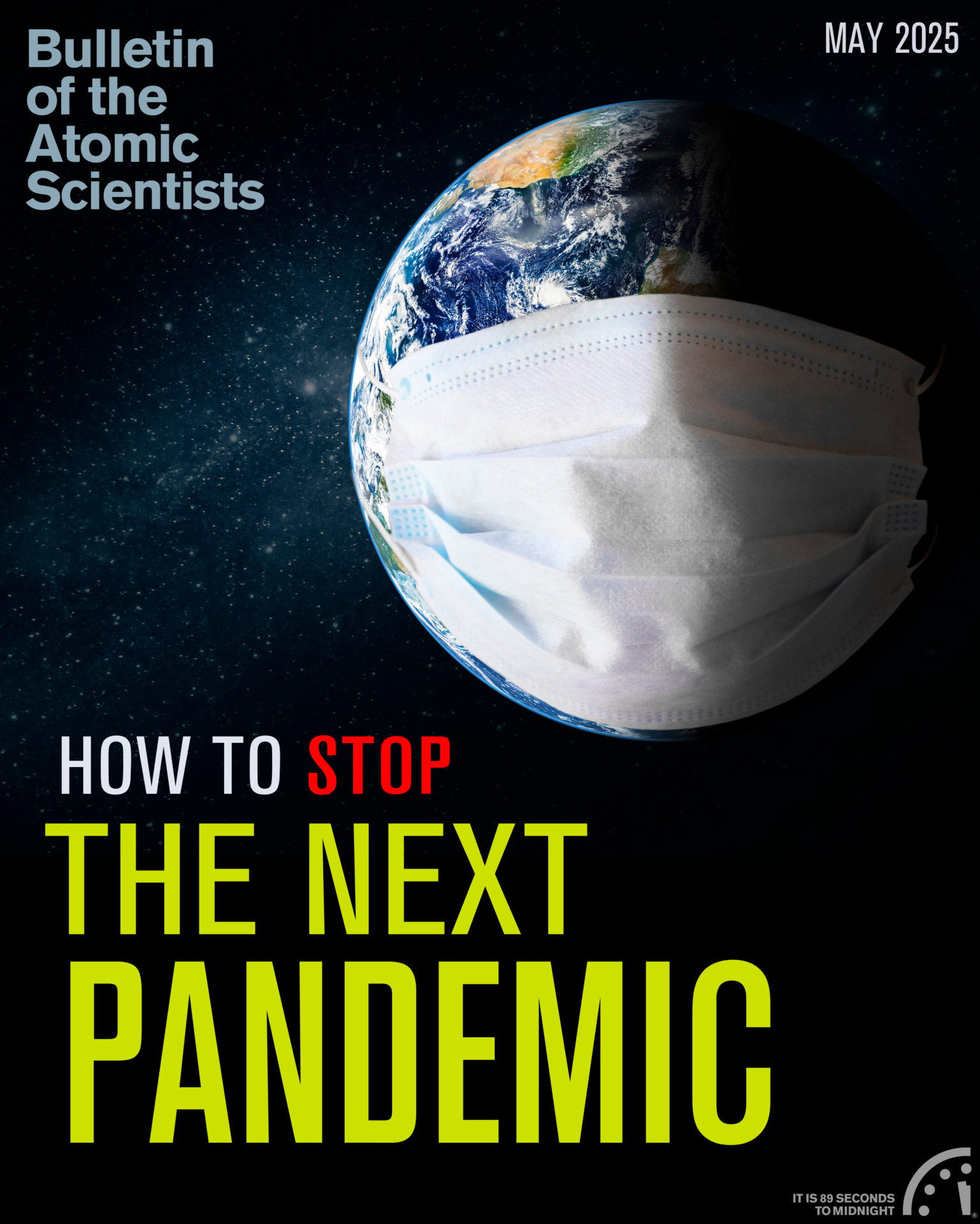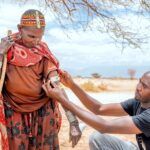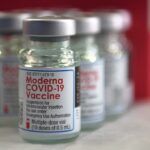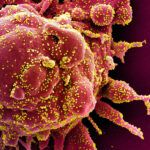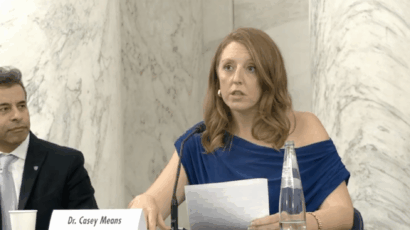Sonia Shah on pandemics and pushback: Lessons from the COVID experience
By Dan Drollette Jr | May 13, 2025
Sonia Shah on pandemics and pushback: Lessons from the COVID experience
By Dan Drollette Jr | May 13, 2025
Now that a little time has passed since the emergence of COVID-19, researchers, historians, and journalists are starting to try to figure out what, exactly, just happened—including what went wrong, and what went right. (And some things did indeed work out right in some countries, the lightning-fast creation of a powerful vaccine being chief among them.)
Most important, they’re delving into what we learned, or didn’t learn, from the experience.
To get a handle on the answers to these questions, I interviewed Sonia Shah, an investigative reporter who has been covering global health for years, for magazines and journals such as Scientific American, The Lancet, and The Nation, among others. She’s written several books on the topic of emerging disease, most of which pre-date COVID-19. Among them are 2017’s Pandemic: Tracking Contagions from Cholera to Ebola and Beyond and her 2010 book The Fever: How Malaria Has Ruled Humankind for 500,000 Years.
Critics have singled out Shah’s ability to take the complexities of epidemiology and weave a compelling narrative.[1] In this Bulletin interview, Shah examines what the takeaways are from the recent pandemic, the measures that were used to contain it, and the pushback that ensued—a backlash that she says may take a long time to recover from.
(Editor’s note: This interview has been condensed and edited for brevity and clarity.)

Dan Drollette Jr.: Let’s jump right in: What can scientists, policy makers, and the public do to prevent the next pandemic? What have we learned from events like COVID?
Sonia Shah: If you look at our current political situation, it’s clear that we’ve learned nothing. Because we’ve gone absolutely backwards, we’re headed in the wrong direction. So maybe what we’ve learned actually is that if you take strong public health measures, there will be such a strong backlash that you will unravel 100 years of progress in public health. So maybe that’s the lesson.
Drollette: But if you don’t do anything, then people die.
Shah: That’s right, it’s a tough situation.
But if we had to do it over again, I think there was a failure of leadership. Because if we’d had leaders in this country who took more proactive measures rather than waiting around until a lot of people were infected, then things would have worked out better. They waited too long before acting, which meant that there was a lot of transmission going on.
Eventually, things got so bad that they required quite muscular actions such as shutdowns and things like that—and the shutdowns then inspired this backlash we’re seeing right now. If the US had only been like New Zealand or some of the Scandinavian countries—or the other countries in Europe that took measures early—then it might have ended differently.
Places like New Zealand were very proactive from the very beginning: They didn’t let a chain of transmission get started at all. Now, one could argue that this meant that they became extremely susceptible to a big outbreak later; there’s always a tradeoff in these things. But these are issues that public health officials and experts can debate and figure out, right? They can find the best balance for whatever society they’re in.
And the answer will vary, because different places containing different populations are going to be tolerant of different kinds of measures.
Drollette: Such as?
Shah: Well, here in the US, we have this long history of rugged individualism, so it’s probably the worst place to do shutdowns. And the United States is strongly pro-capitalist, and shutdowns are probably most likely to absolutely shut down economic activity. I mean, shutdowns are hard for everybody but because of the way we’re set up, we are an especially bad place for that particular measure.
But even with that, there were things that could have been done. For example, we could have done the easier stuff from the very beginning, like testing—really, really, really vigorous testing. Then we probably wouldn’t have had to take on what turned out to be extremely unpopular measures that were damaging in other ways.
This would have required technical expertise and coordination and cooperation across different government agencies—but we just didn’t have good governance at the time when COVID came over.
If we did have good governance, we could have done what I am talking about.
Drollette: At the risk of getting into politics—though everything these days seems to be about politics—when you say that leaders didn’t take the necessary steps early on, you’re specifically referring to the Trump administration?
Shah: Yes, the first Trump administration—which was completely reluctant to do any kind of testing. We had no testing infrastructure at all for an extremely long period of time. They were completely in denial about it.
As a result, we just didn’t know where the virus was, because we were not doing the surveillance. We could have been staying on top of it, we could have had eyes on the ground. And that’s important—that window of time when the disease is first introduced was vital. That’s when the eruptions were little, when you could have just encircled them and made sure people stayed isolated and quarantined. For that little while, you can tamp the disease down before it becomes so huge that it’s everywhere. [At that point] all you can do is shut down the entire economy.
Consequently, that’s what the people who came after Trump were faced with: Here’s this raging disaster, and we need all hands on deck, using every possible measure.
Drollette: You made a casual remark that the backlash to these measures set back global health efforts by 100 years. Do you really think that’s the case?
Shah: It may be more than 100 years.
Think about it: We now have a health secretary who is against vaccines, including our best new technology for developing new vaccines, which is mRNA vaccines. Those are how we got the COVID vaccine within six months, which is amazing. I mean, for every other disease it has taken something like around 10 years to get a vaccine, and here we got an mRNA vaccine that totally worked within six months of the initial COVID outbreak.
So, here’s this amazing tool—mRNA—and our health secretary is someone who has said that he doesn’t want any research done on mRNA; they’re scrubbing NIH grant applications that have anything to do with mRNA. They don’t want to fund this kind of research anymore.
Drollette: Why?
Shah: Because there’s people who support the current administration who think that mRNA vaccines are dangerous. It’s not true, it’s not scientific. It’s not based on evidence, but that’s how they feel.
So it’s just a vibe, a general sense on their part. This means that they’re creating policy based on vibes rather than evidence.
In that sense, it really sets us back probably hundreds of years, to before the Enlightenment—that point at which people finally said: “Let’s do things based on rationality, logic, and evidence.” That was what people in the Enlightenment were saying in the 18th century, and that is how we got to evidence-based medicine and the scientific process—all of the things that made our lives and our society possible.
We now basically have a regime that says: “We don’t want to do things that way. We want to go back to how we did things in medieval times, where decisions were based on how we felt.” In other words, the vibe.
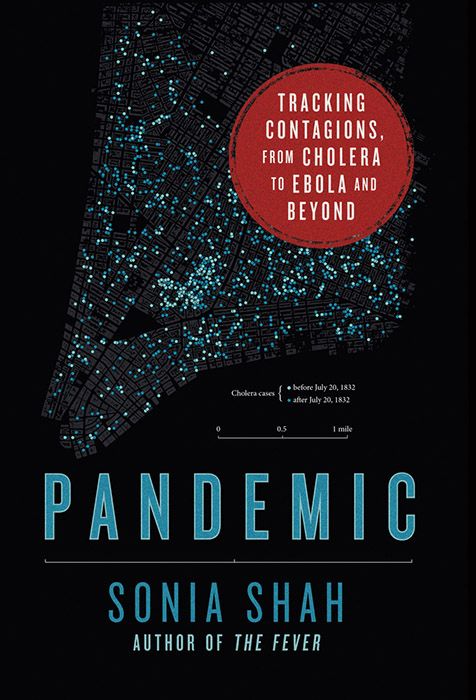
Tracking Contagions, from Cholera to Ebola and Beyond. Image courtesy of Sonia Shah.
Drollette: Was part of the problem a lack of effort in publicizing the successes? Should the government and the scientists have said: “Hey, look at the wonderful things this new mRNA has done for you”?
Shah: They did need to counter everyone complaining about being locked down, about being shut in, about having no business coming in. But they ran into this perennial problem of public health: When you’re successful, your victory looks like nothing happened. No one dies, no one gets ill, no schools or businesses close—nothing occurs.
So it’s very hard for those in the public health field to promote their victory, or to celebrate the kind of society that allowed it to happen and to protect us.
I think part of this is because what lies behind it all is often unglamorous. I mean, what really protects us are the things that we totally take for granted: a functioning waste management system, a working clean water system. Yet these are what keep us from coming down with typhoid, and cholera, and polio, and all these other diseases that we used to have in this country.
The reason we conquered those diseases was through sanitary reforms that happened in the 19th century. And those reforms were based on the simple observation that separating our waste from our food and drink allowed people to live longer. These things are saving countless lives every day, but they’re just not exciting.
Drollette: I understand that you’re an investigative reporter who’s done a lot of reporting on this topic for science magazines and books. So, what would you say are the most likely places where the next disease will emerge?
Shah: Well, most of these new pathogens are emerging from the bodies of animals—non-human animals—and then they come over into us humans when we give them opportunities to have intimate contact with us. And this is more likely in places where there’s habitat destruction.
For example, if you cut down the forest where bats roost, the bats don’t just disappear. Instead, they come and roost in your backyard or farm or garden—so people and bats will have closer contact as a result of habitat destruction.
Now, Ebola, for instance, is a virus that lives in the bodies of bats. It doesn’t make the bats sick, but it finds a home there.This means that if a fruit bat carrying Ebola virus is roosting in the mango tree in your backyard, and your five-year-old kid goes outside to play and picks up a mango that a bat had pooped on, and then puts their hands in their mouth, that’s all it takes to ignite an epidemic.
We create opportunities like this all over the place, and the more we do that, the more likely these spillover events become. And that’s what we have seen in the last 50 years—a continuing uptick in the emergence of new pathogens, because we’re destroying so much wildlife habitat.
Drollette: So the increase in pathogens is really about the destruction of wildlife habitat? Because I had the impression it was more about war and conflict—that places undergoing violent conflict will have poor sanitation, not much in the way of clean drinking water or food, and not many lab facilities—so new bugs have a chance to spread. But you’re saying that’s not really the case?
Shah: To ignite an epidemic, you need a number of different factors to come together at the same time. You need emergence of the pathogen from whatever reservoir it was in. It has to spillover from a non-human animal into a human animal. And then you also need lots of opportunities for transmission.
If one person gets sick and then nobody else gets it because that person is isolated and doesn’t breathe on anyone and doesn’t spit on anyone—or gets sick and dies so quickly that no one else gets [the infection]—then you don’t get an epidemic. [The pathogen] just infects maybe one or two people but not enough to keep a chain of transmission going.
To overcome this, epidemics need a lot of transmission opportunities. And transmission opportunities depend on the mode of transmission of the pathogen. For example, in a place where society is intact and working well, you’re going to have more transmission opportunities for a respiratory pathogen. The logic is that if a pathogen is spreading through, say, respiratory contact, then it needs places where there’s lots of crowding, lots of coughing, lots of opportunities for things to spread through the air—like people getting on the bus and going to work and going to offices and going to school, going to parties. That’s where you’re going to have more transmission opportunities for certain kinds of respiratory pathogens.
But for something like cholera—which spreads through human waste getting into drinking water—that’s going to thrive in places where society has broken down, where there’s a breakdown in sanitation or there was never any sanitation to begin with. Those are the places that are going to have a lot more potential for transmission.
Everything needs to line up just right.
Whether a pathogen turns into a pandemic or not also depends on how we respond; this doesn’t occur in a vacuum. If we respond with good policy, good governance—you know, good science—then even if we have transmission opportunities and spillovers, we can prevent epidemics and pandemics from occurring.
There’s also the factor of travel. We take these things with us when we go to new places. If you look at the way flu viruses spread, you can explain it [transmission] almost entirely by looking at our flight network. You can predict which place is going to have flu next, just by seeing which places have direct flights from places currently infected. And that’s what we saw with the first SARS, for example, which was probably burning in rural mainland China for a while before it made its way down to the island of Hong Kong, [where it infected] a man who stayed at a hotel, got on an international flight, and infected 20 countries all at once.
Drollette: I wonder what that meant in the days before flight—when people were traveling by train or steamboat or sailing ship? I’m thinking that if it took extraordinarily long to travel from, say, England to Australia—about six to nine months—then that would have been a tremendous sort of natural quarantine period.
Shah: Well, that would have depended on the particular microbe. When we were traveling more slowly, there were pathogens that would travel along with us—plague or malaria or cholera, for example.
Microbes want to live, and they will find new opportunities, new niches and adapt. Some pathogens can stay dormant for long periods—malaria can stay dormant in the body for months, years, and sometimes decades. So if an infected person travelled for months or years on board a ship, they’re still carrying it. A mosquito that bites them at the end of the voyagecan still take some parasites and spread them in this new place.
Or it could spread while on board the ship by finding new hosts. Even if you had something that had a fast life-cycle—like a flu, in which the whole period of getting sick and infected is over in a week or something—then over the course of a six-month voyage, it could have plenty of opportunities to hop from person to person, say if there are more than 100 people on board and it was transmitted sort of sequentially. So it depends not only on the speed of travel but also the time of the transmission and how long people are infected for.
Drollette: So it sounds like it’s very hard to make a blanket statement about all diseases everywhere—a lot depends on things are specific to that particular pathogen, its mode of transmission, how long it can stay dormant and still be viable?
Shah: And each one is different.
Drollette: What do you think that journalists can do to tell these kinds of complex topics? Is it best to focus on just one disease and let it stand in for all the others that are emerging out there—or try to give the big picture about the battle against all of them? As you said, talking about sanitation is not a glamorous topic, it’s not going to sell books.
Shah: No, I think you can, if it’s framed the right way. I mean, I wrote the 2017 book Pandemic about emerging diseases, and that was about cholera—a disease that humanity solved through sanitation. And there was a 2007 book by Steven Johnson called The Ghost Map that was also about cholera.[2]
So, cholera is essentially about sanitation—but you can make it into a fascinating book. Because diseases are very dramatic, right? There’s always a narrative in the disease, with a beginning, middle and end. And there’s a plot that just kind of really lends itself to storytelling.
It’s true that when I first started doing this work, there were not many people writing about diseases in that way. But since COVID came on the scene, there’s just been a huge explosion. Consequently, I think a lot of science journalists—and journalists at large—have realized that epidemics are great opportunities for storytelling, with lots of human drama. There’s great characters, there’s the granular detail of how it unfolded; it’s always different in every place that it occurs so it never really gets stale. It’s just very diverse.
Drollette: Is that going to be the theme of your next book?
Shah: No, no. My last book was about human and animal migration and climate change. My new book is about human exceptionalism—a history of the idea of humans as a separate category in nature, where that idea came from, how it was incorporated into science and society, and what that has meant about our relationship to the rest of the living world. Our culture tends to think of human beings as cut off from nature, as separate.
We even have this word “animal,” which doesn’t include humans, right? We have this binary of human versus animal—which doesn’t make sense when you really dig into it, because humans are animals; we’re one kind of animal among millions of animals.
This binary orders our thinking and our society in ways that I think has gotten us into a lot of trouble. It’s why we have a biodiversity crisis, which drives pandemics to begin with.
Drollette: That explains why, from the very start of our conversation, you were talking about the “human animal”…
Shah: Right? Just to make the point that humans are animals too. And that’s something that the pandemic teaches us—to a microbe, we’re all animals, we’re all potential hosts. To a microbe, if you are a bat or you are a human doesn’t matter. From the point of view of COVID, it’s gonna come after you, regardless.
Drollette: Before we sign off here, I wanted to ask you something. Given recent events like the cutbacks to organizations like US AID [US Agency for International Development) and the NIH [National Institutes of Health], and having a secretary of the health department who’s against vaccines, what do you think is the prognosis for the future? What can be done to change these trends, to make our society become more fact-based?
Shah: I think that those of us who care about evidence and science and about good governance—by that, I mean governance that’s fair and responsive to people in society, as opposed to billionaire elites—need to speak out and to connect with each other.
We are in the midst of a wave of authoritarianism in this country. It’s very alarming. Those of us who care about democracy, who care about science and evidence, we need to step up. We can’t just stay home and think these thoughts to ourselves. We need to make them known to others, connect with others, share our values, and then be public about it. I think that’s the only chance we have to build a movement for the values we believe in.
Endnotes
[1]Kirkus Reviews, Feb. 23, 2016 at https://www.kirkusreviews.com/book-reviews/sonia-shah/pandemic-tracking/
[2] For more, see the Goodreads reviews of The Ghost Map: The Story of London’s Most Terrifying Epidemic – and How it Changed Science, Cities and the Modern World at https://www.goodreads.com/book/show/36086.The_Ghost_Map?from_search=true&from_srp=true&qid=TZsWwuqzjM&rank=1
Together, we make the world safer.
The Bulletin elevates expert voices above the noise. But as an independent nonprofit organization, our operations depend on the support of readers like you. Help us continue to deliver quality journalism that holds leaders accountable. Your support of our work at any level is important. In return, we promise our coverage will be understandable, influential, vigilant, solution-oriented, and fair-minded. Together we can make a difference.
Keywords: NIH, Trump, covid, epidemics, public health, shutdowns, vaccines
Topics: Special Topics

